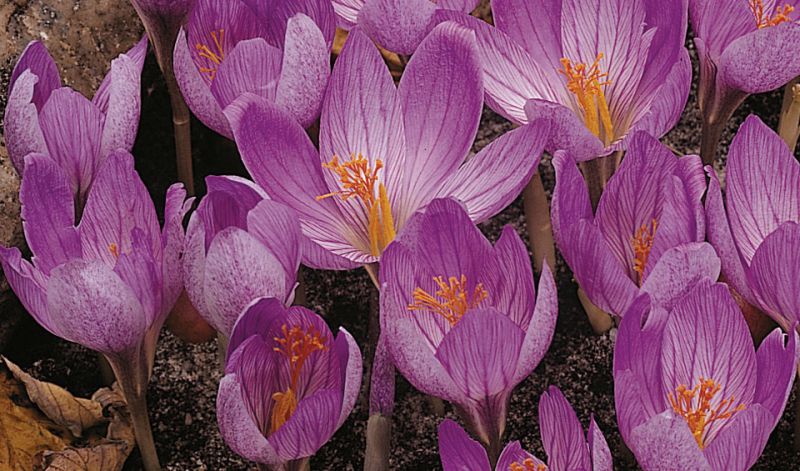Crocus speciosus
("Fall crocus")

As with most Fall crocus, grass-like foliage appears after the flowers are gone. Speciosus tends to grow taller once established, definetely grow it in ground-cover for show and support.
What You Need To Know Before You Plant:
When Will This Flower Bloom?
Mid-Late Fall
When Should I Buy and Plant These Bulbs?
Very Early Fall
What Kind of Light Does This Bulb Prefer?
Full sun to partial shade
What Color Will the Flower Be?
Violet-purple
How Far Apart Should I Plant These Bulbs?
2 in / 5 cm
How Deep Should I Dig?
3 in / 8 cm
How Tall Will It Grow?
6-8 in / 15-20 cm
Recommended Number of Bulbs Per Square Foot?
20
Is It Deer/Critter Resistant?
Yes
How Can I Best Use It in My Landscaping?
In front of shrubs, around trees and in rock gardens.
What Should I Do After Flowering?
Allow the foliage (which appears in the Spring) to die back naturally and they will replenish the bulbs which then remain dormant through the Summer only to bloom again in the Fall for many years to come.
Other Popular Varieties
(Besides the species itself); 'Albus' (white), 'Aitchinsonii' (soft blue) and 'Conqueror' (blue).
About the Family
Crocus (Fall Flowering) Family
Cultivation and harvesting of crocuses was first documented on the island of Crete in the Mediterranean. Crocus are native to woodland, scrub and meadows from sea level, to alpine tundra in central and southern Europe, North Africa and the Middle East, on the islands of the Aegean, and across central Asia into western China. The first crocuses seen in the Netherlands, where they are not native, came from Constantinople in the 1560's. A few ended up with Carolus Clusius in the botanical gardens in Leiden. By 1620 some new varieties had been developed that are very similar to ones still being traded today.
Read More About the Family


